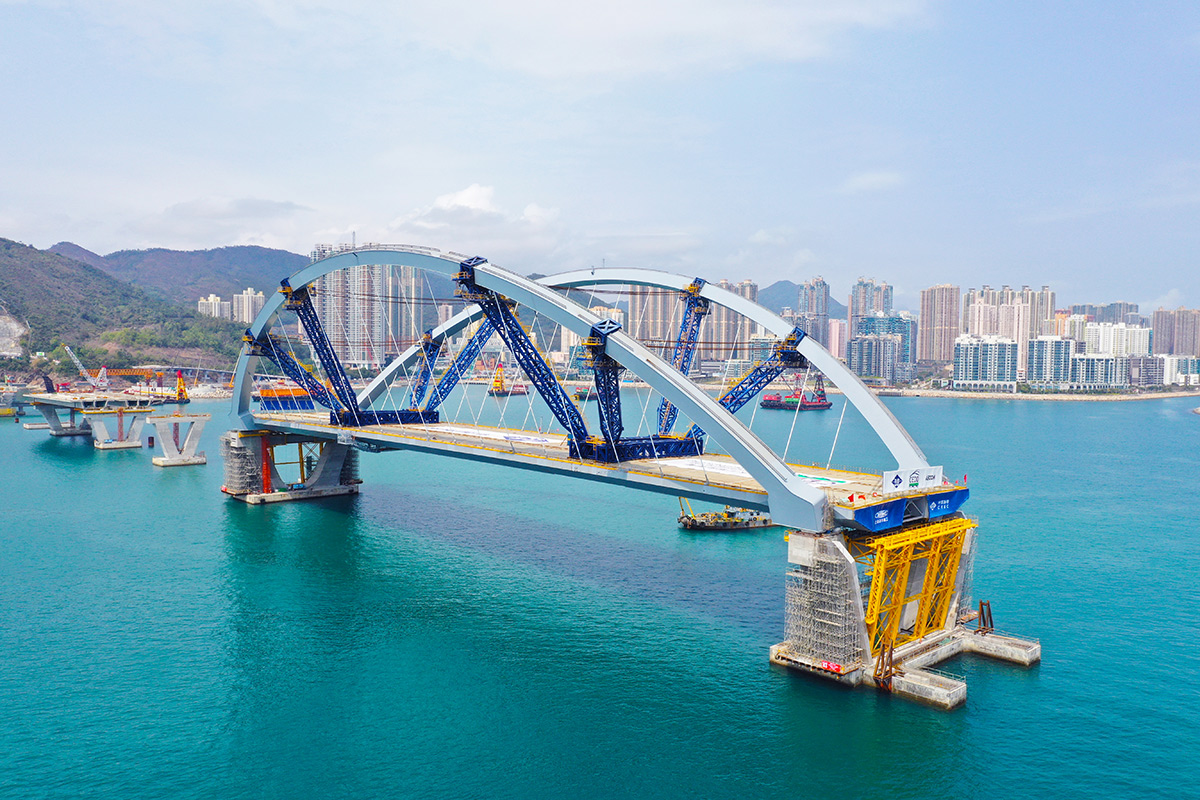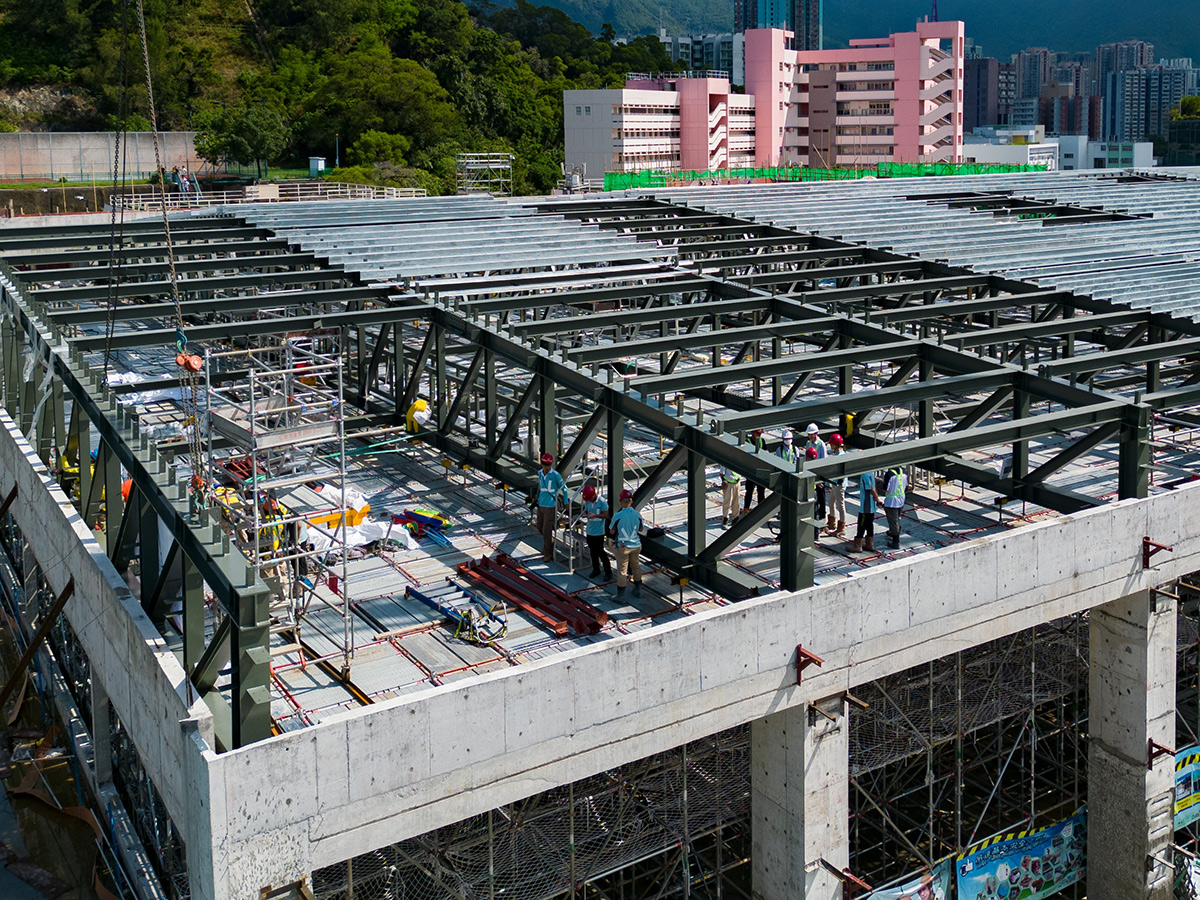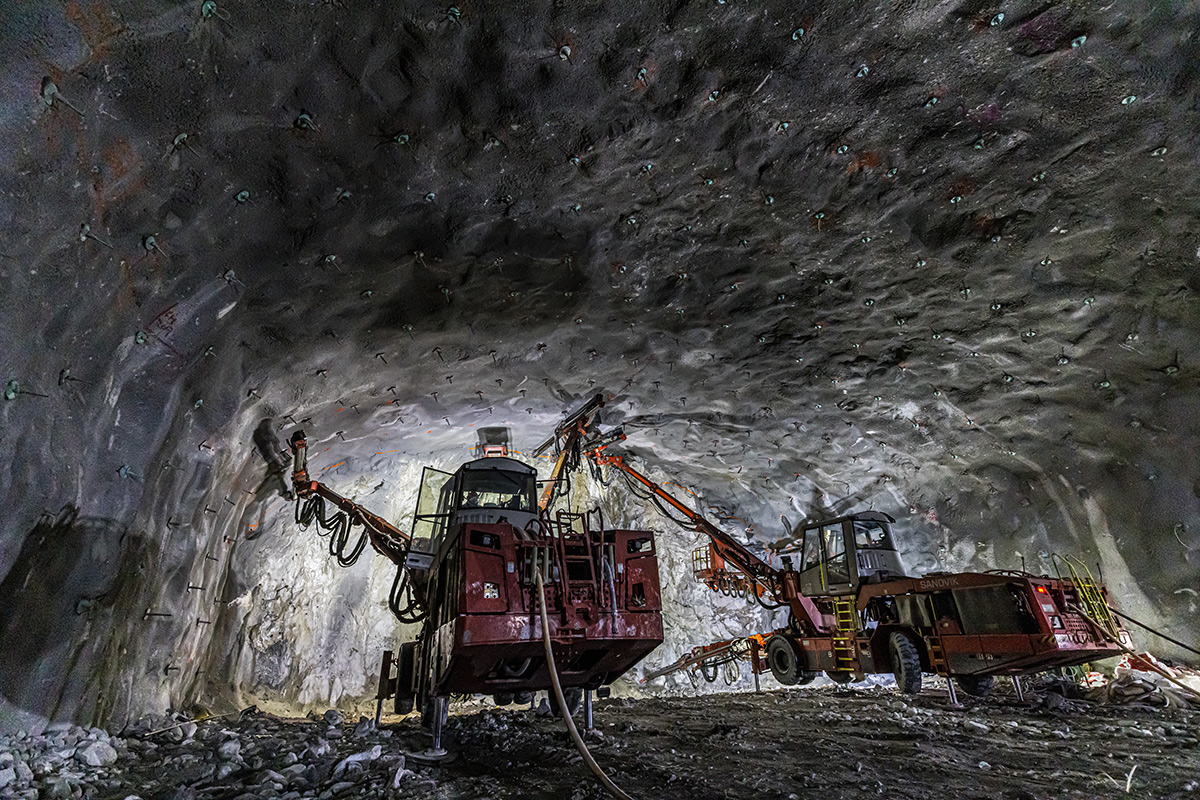Key Initiatives
Applied Research and Development
Applied Research and Development (R&D) in public works projects is crucial for supporting innovation in the construction industry at large. To take forward the applied R&D policy, a Task Force on Applied R&D in Public Works Projects was established by the Development Bureau in 2021 for steering applied R&D. The 2022-23 Budget also earmarked $30 million to promote applied R&D and the pilot adoption of new materials and innovative construction technologies in public works, with a view to enhancing the overall productivity and performance of the construction industry.
Under the coordination of the Task Force, works departments have identified over 140 nos. of Applied R&D items. Among them, several high-impact items which can bring considerable cost, time and productivity benefits, as well as having wide applicability in other projects were identified.
For instance, Grade S690 high-strength steel was applied to the Redevelopment of Kowloon Tsai Swimming Pool Complex, resulting in 30% saving to the steel structure materials in this project. S960 ultra-high strength steel was also applied in the construction of footbridge at Fanling, representing the world's first application of S960 steel in civil bridge construction.
In addition, in collaboration with the Development Bureau and the Works Departments, a Technical Guidance Note No. 53 (TGN 53) has been issued to increase the allowable bearing pressure for pile foundation. This will lead to substantial cost savings in foundation cost and construction time.
Furthermore, Vibration Resistant Sprayed Concrete (VRSC), an advanced material capable of resisting vibration, was under pilot adoption in blasting operation in the relocation of Sha Tin Sewage Treatment Works to rock caverns. The sprayed concrete lining formed by this material could be considered as part of the permanent support, hence bringing overall material and time-saving benefits to local tunnel/cavern projects.
In summary, over ten applied R&D items are currently piloted in more than 50 public works projects, demonstrating the Task Force's commitment to fostering a culture of innovation in the construction industry.


